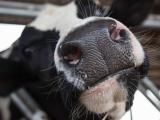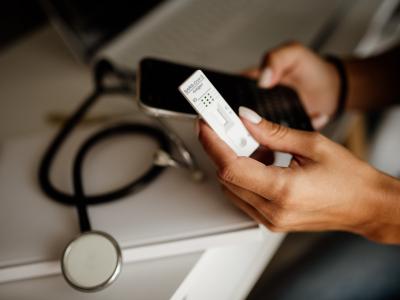Mar 25, 2005 (CIDRAP News) – Two new studies give reason to hope that vaccines prepared in advance could be of some help in combating an influenza pandemic.
A flu pandemic can occur when a flu virus undergoes a significant change in its surface proteins, making it unrecognizable to the immune system. Because such "antigenic shifts" are unpredictable, it is not possible to design a vaccine to precisely match a pandemic flu virus until the virus emerges.
Disease experts fear that the H5N1 avian influenza virus, which has become endemic in poultry in Southeast Asia, may trigger a human flu pandemic if it acquires the ability to spread readily from person to person. This week the United States launched the first clinical trial of a vaccine for the H5N1 virus. But there is no guarantee that the vaccine would work if a pandemic erupted, since a change in the virus would probably precede that development.
However, two studies recently published online by the Journal of Infectious Diseases suggest that avian flu vaccines that don't match up perfectly with the viruses they are intended for may provide some protection.
In one study, human volunteers received a vaccine made from a nonpathogenic H5N3 virus isolated from ducks. When H5N1 viruses were added to serum samples from the volunteers, a significant immune response was generated in the form of antibodies.
In the other experiment, mice were given one of two vaccines that contained surface proteins from H5N1 viruses isolated from geese and humans. When the mice were subsequently exposed to other H5N1 viral strains, the vaccines protected most of them from dying or getting sick.
Immune response in human serum
The human study was conducted by a team of researchers from the Centers for Disease Control and Prevention, Chiron Vaccines in Italy, and two laboratories in the United Kingdom. They recruited 65 people in Leicester, UK, and gave them two doses of a vaccine made from an H5N3 duck virus isolated in Singapore in 1997. Some of the volunteers received the vaccine alone, while others received the vaccine with an adjuvant—a compound that helps stimulate immune responses—called MF59. Sixteen months later, 26 of the 65 volunteers received a third dose of the same vaccine they had received before (15 received vaccine with MF59, while 11 received vaccine with no adjuvant).
Serum samples were taken before and 3 weeks after vaccination and sent to the CDC, where they were tested for antibody responses to four different H5N1 viruses isolated from humans. These included 1997 and 2003 strains from Hong Kong and 2004 strains from Vietnam and Thailand.
The experiment showed that the conventional (no adjuvant) vaccine induced little antibody response to any of the H5N1 viruses, whereas the adjuvanted vaccine generated good responses.
After three doses of adjuvanted vaccine, significant antibody responses (seroconversion) to the Hong Kong 1997 virus were seen in 100% of the samples. Seroconversion rates for the other three viruses were 100% for Hong Kong 2003, 71% for Thailand 2004, and 43% for Vietnam 2004. The seroconversion rates for the nonadjuvanted vaccine with respect to the four viruses were 27%, 27%, 0%, and 0%.
The researchers write that three doses of the adjuvanted vaccine "induced broadly cross-reactive antibody capable of neutralizing antigenically distinct HPAI [highly pathogenic avian influenza] H5N1 viruses isolated from humans during 1997-2004. . . . The ability of an H5 vaccine to induce broad cross-reactive immune responses could be crucially important in the early response to an emerging pandemic."
The authors acknowledge that a three-dose immunization schedule wouldn't be practical in the face of a pandemic. However, they suggest that in the early stages of a pandemic it may be possible to provide partial protection for people at high risk, such as healthcare workers, with an adjuvanted vaccine made from an H5 virus strain prepared in advance.
Vaccines protect mice
The mouse experiment was conducted by Aleksandr S. Lipatov and four colleagues at St. Jude's Children's Research Hospital in Memphis. They injected mice with one of two inactivated vaccines made with the process called reverse genetics. The researchers used genes for the surface proteins—hemagglutinin and neuraminidase (HA and NA)—and internal proteins from several different flu viruses.
One vaccine, called delta H5N3, combined the HA gene from a 1999 H5N1 goose virus from Hong Kong with the NA gene from an H2N3 duck virus from Germany. The other vaccine, called delta H5N1/03, used the HA and NA genes from a human H5N1 virus isolated in Hong Kong in 2003. Both vaccines also contained six viral genes encoding internal proteins from an H1N1 virus, along with an adjuvant.
After immunization at one of three doses of vaccine, the mice were exposed to one of three H5N1 viruses: human isolates from 1997 and 2003 and an avian virus from 2001. The vaccinated mice responded with high levels of antibodies, which in most cases decreased or prevented viral replication in their lungs.
From 90% to 100% of mice injected with the delta H5N3 vaccine survived and had few signs of illness, whereas all of the control mice died. The delta H5N1/03 vaccine provided nearly as high a level of protection. The exception was that mice that received the lowest dose of vaccine were vulnerable to the 2001 avian H5N1 virus.
The authors also analyzed and found slight differences among the amino acid sequences of the HAs in the two tested vaccines and the three challenge viruses. They conclude, "The present results demonstrate the cross-protective efficacy of H5N1 vaccine viruses that contain antigenically different HAs. Our data suggest that, at least in the mouse model, the vaccine strain need not match the challenge virus to achieve a high level of cross-protection."
In an editorial accompanying the two reports, Benjamin Schwartz and Bruce Gellin of the Department of Health and Human Services' (HHS') National Vaccine Program Office welcome the studies but cite various limitations. The studies "do provide a good foundation for further work to develop and test candidate pandemic vaccines and assess pandemic vaccination strategies," they write.
Concerning the human study, Schwartz and Gellin state, "The need for 3 vaccine doses, the use of an adjuvant not licensed in the United States, and uncertain levels of protection even in a young and healthy population limit the viability of such a vaccination strategy."
The mouse experiment provides "proof of concept that H5 vaccines produced by use of reverse genetics can be immunogenic and effective in an animal model," Schwartz and Gellin say. "However, no conclusions can be reached regarding levels of protection in humans, the number of doses needed, the amount of antigen required per dose, the need for an adjuvant, or the degree of protection against all heterologous H5 strains."
Stephenson I, Burgarini R, Nicholson KG, et al. Cross-reactivity to highly pathogenic avian influenza H5N1 viruses after vaccination with nonadjuvanted and MF59-adjuvanted influenza A/Duck/Singapore/97 (H5N3) vaccine: a potential priming strategy. J Infect Dis 2005 Apr 15 ;191(8):1210-5 [Abstract]
Lipatov AS, Webby RJ, Govorkova EA, et al. Efficacy of H5 influenza vaccines produced by reverse genetics in a lethal mouse model. J Infect Dis 2005(Apr 15);191(8):1216-20 Vaccination strategies for an influenza pandemic. J Infect Dis 2005 Apr 15 ;191(8):1216-20 [Abstract]
Schwartz B, Gellin B, et al. Vaccination strategies for an influenza pandemic. (Editorial Commentary) J Infect Dis 2005 Apr 15 ;191(8):1207-9 [Full text]



















